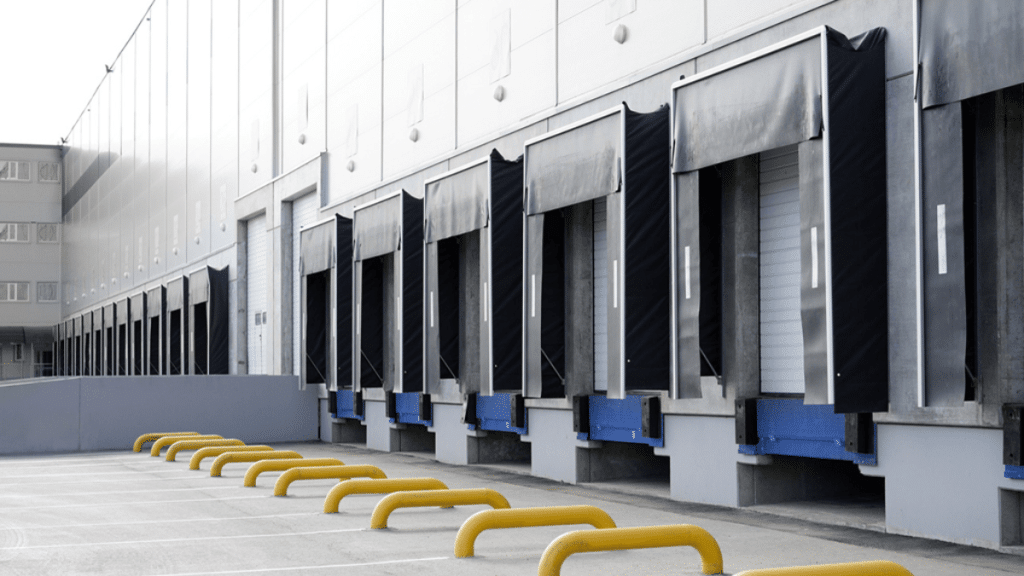Today’s industrial facility is not simply a space, it is a zone with moving parts, in a complicated ecosystem that needs to adapt to evolving needs, improve safety, increase workflow efficiency, and impress customers and employees as well. From the reliable sturdy elevators to robust, weather-sheltered loading docks to state-of-the-art physical security accessible through an app at your fingertips, each access system needs to keep up with the needs of the time.
Whether it’s constructing a state-of-the-art warehouse, renovating a logistics center, or revamping your commercial space, smart facility construction begins with selecting proper infrastructure, together with automation, green features, and smart design. In this article, we will discuss three key elements of this infrastructure: elevators, dock shelters, and bollards- and why they’re more important now than ever before to operations in any industrial, cargo, commercial or construction space.
Elevators- Reliable and Dependable
In every multi-level facility, elevators are not a luxury – they’re a lifeline. Intelligent facilities use industrial-grade elevators to keep people, equipment, and inventory moving quickly and safely between floors. Whether in a warehouse, hospital, data center, or corporate campus, elevators prevent operations from being held up by slow or unsafe access.
Modern industrial lifts are more robust and smarter than ever before. Some of their characteristic, yet modern features are – IoT Integration, where the elevator is now able to report wear-and-tear in real-time, automate scheduling of maintenance, and lower breakdowns through predictive diagnostics. Secondly, with the rise in green-friendly building regulations, elevators also perform energy efficiency through regenerative drives which recover and recycle energy during a descent. Touchless control units as well as access-level authorisation through card or mobile phone are becoming ubiquitous, as hygiene considerations become more prominent, and site owners require inspection of their premises from home. Elevators now also come with accessibility fitting for older people, people with disabilities and other guests.
Dock Shelters- Repelling the Elements
Anyone who has had anything to do with industry will tell you what the most logistics-intensive facility is- the loading bay. Safe and productive loading and unloading operations are paramount for preserving inventory, especially when it includes fragile or perishable goods, as well as maintain workflow. And that is where dock shelters enter the picture- an impressively advanced answer to a perpetual industrial dilemma of speed over secure transit.
Dock shelters are protection seals placed on loading dock doors that make a sealed connection between a truck’s/trailer’s back and a building. Dock shelters serve a multifunctional purpose- they may help with climate control by keeping undesired heat, cold, wind, or rain out of the facility during loading, a requirement for sensitive commodities such as food, medicines, or electronics. They assist with saving energy by maintaining the interior environment, reducing energy consumption, and HVAC strain, thus supporting sustainability goals. Most importantly, they are tantamount to worker safety-where workers can load/unload quicker without being exposed to external elements such as sun and rain, thus decreasing accidents and enhancing the speed of operations.
Futuristic dock shelters even come decked out with sensors that can spot truck alignment, signal light systems for the dockworkers, and smart interlocks that will not allow doors to open until a secure seal is established. If your business is processing any amount of inbound or outbound freight, overlooking the need for dock shelters exposes your operation to inefficiency, safety hazards, and unnecessary expense.
Bollards- the Underrated Giants of Access Management
Underrated, yet effective, bollards are often underestimated for the various advantages they bring to your facilities. First – they are optimum in security and traffic management. Bollards are those short, solid posts that you notice out front of buildings or set within parking spaces, and they play a key role protecting individuals, property, and assets.
In smart facility planning, the bollard is more than a passive metal post anymore. Some of the key things bollards do for your facility are – firstly, perimeter security. Fixed steel bollards reinforced with steel or concrete can stop a vehicle in its tracks. They’re necessary to prevent ram-raid or vehicle-borne assaults, for defining pedestrian walkways and for securing and demarcating important infrastructure such as entrances, transformers, or glass frontage.
Second, they allow for dynamic access control through automatic bollards, also known as retractable bollards, which are scheduled to rise/fall on pre-set timetables, can be integrated with vehicle recognition systems and are aligned with security measures.
Some bollards even come decked out with decorative finishes, LED illumination, stainless steel finishes, and even branding capabilities, adding curb appeal while maintaining safety. Smart bollards may be networked to a facility’s surveillance or building management system (BMS) as well, permitting immediate lock-downs or access denial on alerts.
The Final Word
Efficient traffic flow, managed environments, secure access, and seamless operations all result from careful planning and smart systems. So, if you’re planning, renovating, or expanding a commercial or industrial space, do not merely think big- but think smart. Add the appropriate access systems and plan for a future-proofed facility that is as efficient as it is secure.
Angela Spearman is a journalist at EzineMark who enjoys writing about the latest trending technology and business news.
